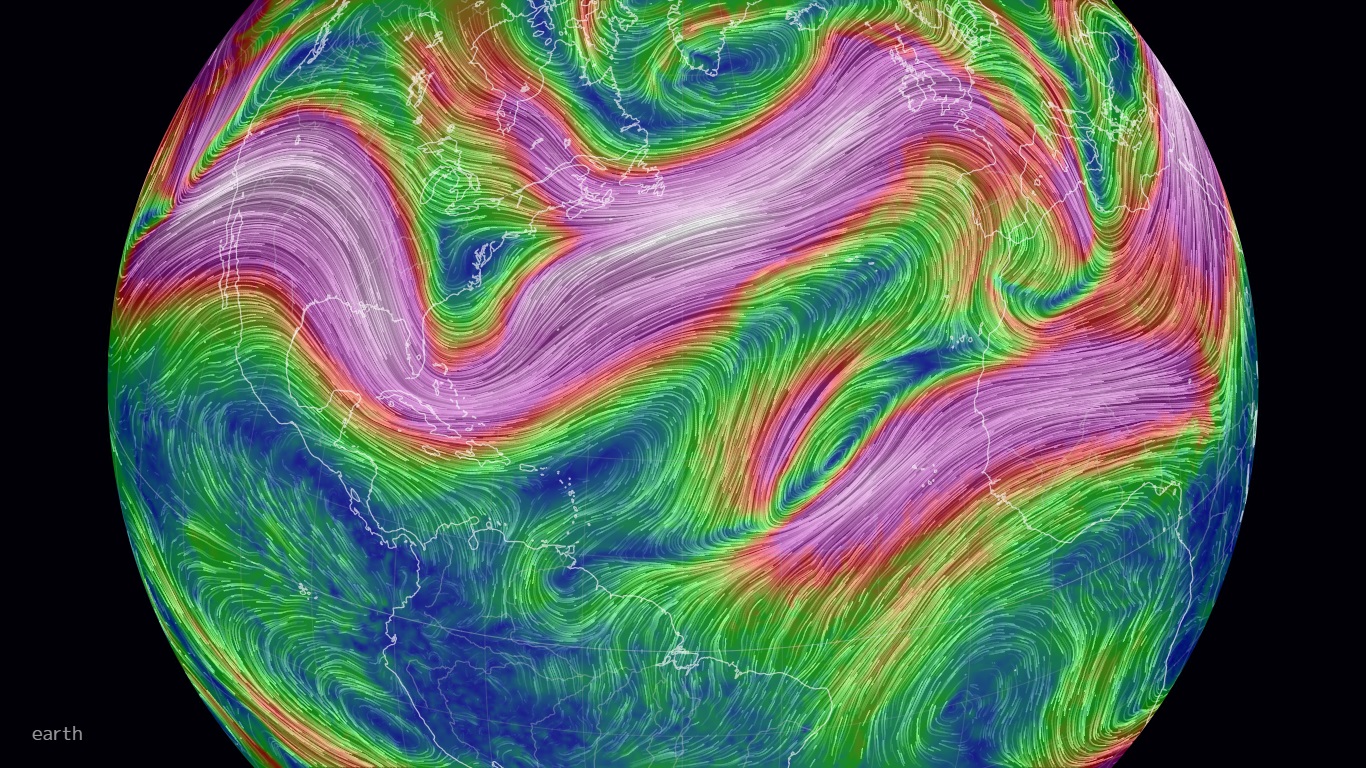
An impressive cold front at the beginning of the week extended from Central America to Iceland and part of the United Kingdom, thousands of kilometers long. The striking frontal system was associated with a powerful extratropical cyclone south of Greenland and was accompanied by an extremely strong jet stream (wind stream) at altitudes above 10,000 metres.
A beautiful shot from space of the players involved in the evil Atlantic Jet stream. Thanks @george_neally ! https://t.co/7z2mJJHWIu pic.twitter.com/KLDN3ofcTK
– Jeff Berardelli (@WeatherProf) February 20, 2024
The extremely intense jet stream, as a result of the large temperature contrast, meant that some flights on transatlantic routes between the United States and Europe were much shorter than usual, much to the surprise and delight of passengers who arrived much earlier than expected at their destinations.
Some of these international flights exceed 1,250 km/h due to very strong winds at altitude, much faster than the speeds of 800 km/h to 1,000 km/h that commercial flights typically travel at.
Winds reaching speeds of up to 420 km/h at the high altitudes where planes fly have pushed three planes onto international routes, allowing them to reach speeds of more than 1,300 km/h and reach their destinations faster.
The U.S. National Weather Service office serving the Washington-Baltimore area said the wind speed of 260 mph in the high-altitude jet stream was the second highest speed measured since records began in the 1950s, and the only comparable highest speed was 429. km/h on December 6. 2002.
“For those traveling east in this jet stream, there will be a lot of tailwinds,” the National Weather Service office in Baltimore, Washington wrote on social media, referring to the jet stream.
Experts say the impact of climate change is causing stronger winds within the jet stream, a narrow band of intense winds at high altitudes that flow from west to east. While this can help provide favorable winds for downstream aircraft, there are also disadvantages such as more turbulence and stronger headwinds for westbound flights from Europe to the United States.
Strong jet stream (winds) high in the North Atlantic | The land is empty
The much shorter-than-usual flights included, for example, Virgin Atlantic Flight 22, which departed Washington Dulles International Airport and landed in London 45 minutes early, according to flight tracking website FlightAware. At an altitude of 33,350 feet, the plane reached a top speed of 1,290 km/h.
The jet stream also assisted United Airlines Flight 64 from Newark to Lisbon. The plane flew at a speed of 1,338 kilometers per hour. But the fastest flight that day was American Airlines Flight 120, from Philadelphia to Doha, Qatar, which reached a top speed of 1,351 km/h.
In comparison, British Airways' Concorde flew at a cruise speed of 2,350 kilometers per hour, more than twice the speed of sound, and traveled from New York to London in less than three hours. Concorde was withdrawn from service in 2003.
Although the planes flown by the Jet Stream moved faster than the speed of sound, which travels at about 700 miles per hour, the flights did not break the sound barrier. This is because the speeds of the aircraft themselves, without the help of wind, were not greater than the speed of sound.
MetSul Meteorologia is available on WhatsApp channels. subscription here To access the channel in the messaging application and receive forecasts, alerts and information about the most important weather and climate events in Brazil and around the world, with exclusive data and information from our team of meteorologists.

“Proud explorer. Freelance social media expert. Problem solver. Gamer.”


:strip_icc()/s03.video.glbimg.com/x720/12789822.jpg)
:strip_icc()/i.s3.glbimg.com/v1/AUTH_59edd422c0c84a879bd37670ae4f538a/internal_photos/bs/2024/1/O/S6O6oKQwScXfbCIlfKag/000-364x8a3.jpg)
:strip_icc()/s04.video.glbimg.com/x720/12781543.jpg)

